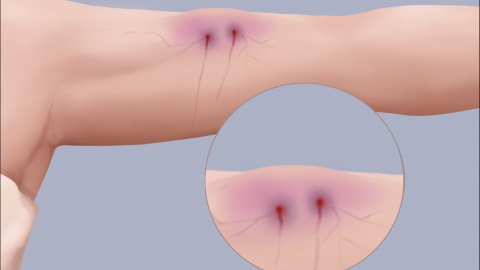Is it serious if I got bitten and bled by a snakehead fish?
Generally, if bleeding occurs after being bitten by a snakehead fish, the risk is relatively low if the wound is shallow and promptly treated properly. However, deeper wounds with persistent bleeding or improper management may lead to complications such as infection or tissue damage, which are more serious. If in doubt, it is advisable to seek medical advice promptly. Detailed analysis is as follows:

If the wound only involves superficial skin damage with minimal bleeding, immediately rinse it under running water to remove debris, then disinfect with iodine tincture. Keep the wound clean and dry afterward. If there is no subsequent redness, swelling, or worsening pain, the body can usually heal on its own. In such cases, there is generally no need for excessive concern—just avoid getting the wound wet during daily activities.
If the wound is deep and continues to bleed, or if the teeth of the snakehead fish have caused tissue laceration, underlying blood vessels or nerves may be damaged. Additionally, since snakehead fish often live in environments that harbor bacteria, failure to treat the wound promptly may result in infection, manifesting as redness, swelling, pus discharge, or fever. In severe cases, this could even lead to local tissue necrosis. Such situations require immediate medical attention, where healthcare professionals will perform proper wound debridement, hemostasis, and possibly suturing. A tetanus vaccine may also be administered if necessary.
After being bitten by a snakehead fish, first assess the severity of the wound: minor injuries can be managed at home promptly, while severe wounds require immediate medical care. During recovery, if any abnormal reactions occur at the wound site, do not delay—seek timely follow-up evaluation and professional treatment.







